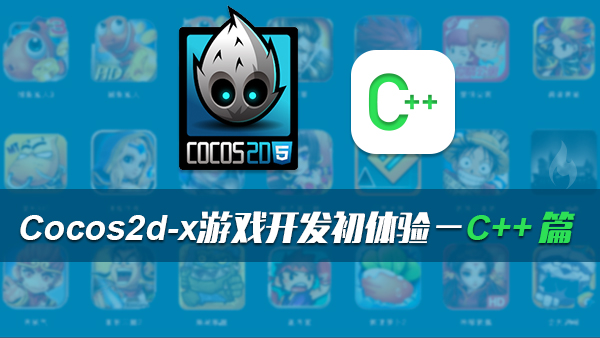本文提供了关于Qt框架学习的全面指南,涵盖了Qt简介、安装、开发环境搭建、基本组件与布局、信号与槽机制、界面设计与美化、项目构建与调试以及项目管理与版本控制等内容。通过详细的操作步骤和示例代码,帮助新手快速入门并掌握Qt开发技能。文中还包括了Qt Designer工具的使用方法和如何使用样式表美化界面,使开发过程更加高效。
Qt框架学习:新手入门教程 Qt简介与安装Qt框架介绍
Qt是一个跨平台的C++图形用户界面应用程序开发框架,它为开发者提供了广泛的API和工具集,可以在多种操作系统上构建丰富的图形用户界面。Qt不仅支持Windows、Linux和macOS等操作系统,还支持移动平台如Android和iOS。Qt的主要优势包括:
- 跨平台:可以在多种操作系统上运行。
- 高效的图形渲染:Qt的图形组件库提供了丰富的图形渲染功能。
- 强大的信号与槽机制:使组件间的通信变得简单。
- 高度可定制的界面设计:通过Qt Designer等工具可以方便地设计和调整用户界面。
- 丰富的组件库:提供多种UI组件,如按钮、标签、输入框等。
- 支持多线程和网络编程:使得开发复杂应用成为可能。
Qt开发环境搭建
安装Qt需要满足一定的系统要求,确保你的开发环境满足以下条件:
- 安装Qt支持的操作系统(Windows、macOS、Linux等)。
- 安装必要的开发工具,如C++编译器(GCC或Clang)、make工具等。
- 安装Qt库和开发工具。可以从Qt官方网站下载对应的安装包。
Windows
- 下载Qt安装程序,可以从Qt官方网站(https://www.qt.io/download-open-source)下载。
- 运行安装程序,选择所需的Qt版本和组件(如Qt for Desktop, Qt for Android等)。
- 安装完成后,安装Qt Creator(Qt集成开发环境)。
macOS
- 下载Qt安装程序,可以从Qt官方网站(https://www.qt.io/download-open-source)下载。
- 运行安装程序,选择所需的Qt版本和组件。
- 安装完成后,安装Qt Creator。
Linux
- 使用包管理器安装Qt,例如在Ubuntu上可以执行以下命令:
sudo apt-get update sudo apt-get install qt5-default - 安装Qt Creator。
Qt Creator安装与使用
Qt Creator是Qt官方提供的开发环境,用来开发和调试Qt应用程序。安装完成后,可以通过以下步骤创建和运行Qt项目。
创建新项目
- 打开Qt Creator,点击“文件”菜单,选择“新建文件或项目”。
- 在弹出的窗口中选择“应用程序”类别,选择“Qt Widgets Application”。
- 输入项目名称(例如“myapp”),选择项目位置,点击“下一步”。
- 在应用设置中选择需要的功能组件(例如,启用网络、数据库等)。
- 点击“完成”,Qt Creator将自动创建项目文件和初始代码。
运行项目
- 在Qt Creator中,选择“构建”菜单,点击“构建项目”。
- 构建完成后,选择“运行”菜单,点击“开始调试”。
- 将弹出一个窗口显示你的应用。
#include <QApplication>
#include <QWidget>
#include <QPushButton>
class MyWindow : public QWidget {
public:
MyWindow() {
QPushButton *button = new QPushButton("Hello", this);
QVBoxLayout *layout = new QVBoxLayout(this);
layout->addWidget(button);
}
};
int main(int argc, char *argv[]) {
QApplication app(argc, argv);
MyWindow window;
window.show();
return app.exec();
}常用组件介绍
Qt提供了多种基本组件和高级组件,这里介绍一些常用的组件:
- QWidget:是所有UI组件的基类。
- QPushButton:一个按钮组件。
- QLabel:一个标签组件。
- QLineEdit:一个输入框组件。
- QCheckBox:一个复选框组件。
- QRadioButton:一个单选按钮组件。
- QSlider:一个滑块组件。
- QComboBox:一个组合框组件。
- QListWidget:一个列表视图组件。
- QTableWidget:一个表格视图组件。
示例代码
#include <QApplication>
#include <QWidget>
#include <QPushButton>
#include <QLabel>
#include <QLineEdit>
#include <QCheckBox>
#include <QRadioButton>
#include <QSlider>
#include <QComboBox>
#include <QListWidget>
#include <QTableWidget>
int main(int argc, char *argv[]) {
QApplication app(argc, argv);
QWidget window;
QPushButton *button = new QPushButton("按钮", &window);
QLabel *label = new QLabel("标签", &window);
QLineEdit *lineEdit = new QLineEdit(&window);
QCheckBox *checkBox = new QCheckBox("复选框", &window);
QRadioButton *radioButton = new QRadioButton("单选按钮", &window);
QSlider *slider = new QSlider(Qt::Horizontal, &window);
QComboBox *comboBox = new QComboBox(&window);
comboBox->addItem("选项1");
comboBox->addItem("选项2");
QListWidget *listWidget = new QListWidget(&window);
listWidget->addItem("列表项1");
listWidget->addItem("列表项2");
QTableWidget *tableWidget = new QTableWidget(3, 3, &window);
window.show();
return app.exec();
}布局管理器使用
布局管理器是Qt中用于管理窗口部件位置的重要组件。常用的布局管理器包括QVBoxLayout、QHBoxLayout、QGridLayout等。
示例代码
#include <QApplication>
#include <QWidget>
#include <QPushButton>
#include <QVBoxLayout>
int main(int argc, char *argv[]) {
QApplication app(argc, argv);
QWidget window;
QPushButton button1("按钮1", &window);
QPushButton button2("按钮2", &window);
QPushButton button3("按钮3", &window);
QVBoxLayout *layout = new QVBoxLayout(&window);
layout->addWidget(&button1);
layout->addWidget(&button2);
layout->addWidget(&button3);
window.show();
return app.exec();
}组件属性设置
组件的属性可以通过QWidget::setProperty和QWidget::property方法进行设置和获取。
示例代码
#include <QApplication>
#include <QWidget>
#include <QPushButton>
int main(int argc, char *argv[]) {
QApplication app(argc, argv);
QWidget window;
QPushButton button("按钮", &window);
button.setProperty("color", "red");
qDebug() << "按钮颜色:" << button.property("color").toString();
window.show();
return app.exec();
}信号与槽基础概念
在Qt中,信号与槽机制是一种对象间通信机制。当一个对象发送信号时,所有连接到该信号的槽函数将被调用。信号和槽机制可以实现组件间的解耦,提高代码的可维护性。
创建简单信号与槽
示例代码
#include <QApplication>
#include <QWidget>
#include <QPushButton>
void buttonClicked() {
qDebug() << "按钮被点击了";
}
int main(int argc, char *argv[]) {
QApplication app(argc, argv);
QWidget window;
QPushButton button("按钮", &window);
QObject::connect(&button, &QPushButton::clicked, buttonClicked);
window.show();
return app.exec();
}信号与槽在实际项目中的应用
信号与槽机制广泛应用于各种实际项目中,例如:
- 用户输入:当用户在输入框中输入内容时,触发信号,进行数据验证。
- 按钮点击:按钮点击时触发信号,启动某个操作。
- 滑块滑动:滑块滑动时触发信号,调整数值或刷新界面。
示例代码
#include <QApplication>
#include <QWidget>
#include <QSlider>
#include <QLabel>
#include <QVBoxLayout>
void sliderMoved(int value) {
qDebug() << "滑块值:" << value;
}
int main(int argc, char *argv[]) {
QApplication app(argc, argv);
QWidget window;
QSlider slider(Qt::Horizontal, &window);
QLabel label("0", &window);
QObject::connect(&slider, &QSlider::valueChanged, &label, &QLabel::setText);
QObject::connect(&slider, &QSlider::valueChanged, sliderMoved);
QVBoxLayout *layout = new QVBoxLayout(&window);
layout->addWidget(&slider);
layout->addWidget(&label);
window.show();
return app.exec();
}Qt Designer工具介绍
Qt Designer是一个图形界面设计工具,它允许开发者在拖拽和释放组件的同时进行界面设计。通过Qt Designer,可以创建复杂的用户界面,并将其保存为.ui文件。这些文件可以被Qt C++代码加载和使用。
使用样式表美化界面
Qt支持使用CSS样式表(QSS)来美化界面。QSS允许开发者定义组件的颜色、字体、边框等属性。
示例代码
#include <QApplication>
#include <QWidget>
int main(int argc, char *argv[]) {
QApplication app(argc, argv);
QWidget window;
window.setStyleSheet("background-color: lightblue; font: bold 14px;");
window.show();
return app.exec();
}动态修改界面布局与组件
在运行时动态修改界面布局和组件属性也是非常常见的操作。可以通过代码改变组件的布局管理器、位置、大小等。
示例代码
#include <QApplication>
#include <QWidget>
#include <QPushButton>
#include <QVBoxLayout>
int main(int argc, char *argv[]) {
QApplication app(argc, argv);
QWidget window;
QPushButton button1("按钮1", &window);
QPushButton button2("按钮2", &window);
QVBoxLayout *layout = new QVBoxLayout(&window);
layout->addWidget(&button1);
layout->addWidget(&button2);
// 动态添加一个按钮
QPushButton *button3 = new QPushButton("按钮3", &window);
layout->addWidget(button3);
window.show();
return app.exec();
}项目构建流程
Qt项目的构建流程通常包括以下几个步骤:
- 编写代码:编写应用程序的源代码。
- 编译资源文件(如
.qrc文件):将资源文件编译成二进制资源文件。 - 编译源代码:将源代码编译成目标文件。
- 链接目标文件:将目标文件链接成可执行文件。
- 运行程序:运行生成的可执行文件进行测试。
示例代码
#include <QApplication>
#include <QWidget>
#include <QPushButton>
#include <QVBoxLayout>
int main(int argc, char *argv[]) {
QApplication app(argc, argv);
QWidget window;
QPushButton button1("按钮1", &window);
QPushButton button2("按钮2", &window);
QVBoxLayout *layout = new QVBoxLayout(&window);
layout->addWidget(&button1);
layout->addWidget(&button2);
window.show();
return app.exec();
}常用调试工具介绍
Qt提供的调试工具包括:
- Qt Creator:内置了调试器,可以设置断点、查看变量值、单步执行等。
- QDebug:用于调试输出,可以输出变量值、字符串等信息。
- Q_ASSERT:用于断言检查,确保代码中的条件符合预期。
示例代码
#include <QApplication>
#include <QWidget>
#include <QDebug>
int main(int argc, char *argv[]) {
QApplication app(argc, argv);
QWidget window;
qDebug() << "应用程序启动";
window.show();
return app.exec();
}错误排查与调试技巧
在调试过程中,可以使用以下技巧:
- 打印调试信息:使用
qDebug()输出调试信息。 - 设置断点:在Qt Creator中设置断点,单步执行代码。
- 检查变量值:在调试模式下查看变量的当前值。
- 使用调试日志:在代码中添加
QLoggingCategory,记录关键信息。
示例代码
#include <QApplication>
#include <QWidget>
#include <QDebug>
#include <QLoggingCategory>
int main(int argc, char *argv[]) {
QLoggingCategory::setFilterRules("myapp.debug=true");
QApplication app(argc, argv);
QWidget window;
qDebug() << "应用程序启动";
window.show();
return app.exec();
}项目文件结构管理
一个典型的Qt项目文件结构包括:
.pro文件:项目配置文件,指定编译规则和依赖关系。- 源代码文件:如
.cpp、.h文件。 - 资源文件:如
.qrc文件。 - 头文件:如
.h文件。 - 编译生成的文件:如
.o、.exe等。
示例项目的文件结构
myapp/
├── main.cpp
├── myapp.pro
└── myapp.h使用Git进行版本控制
Git是一个分布式版本控制系统,用于管理代码版本。以下是使用Git的基本步骤:
- 安装Git:可以在官方网站下载并安装。
- 初始化仓库:使用
git init命令初始化一个新的仓库。 - 添加文件:使用
git add命令将文件添加到暂存区。 - 提交版本:使用
git commit命令提交版本。 - 克隆仓库:使用
git clone命令克隆一个仓库。
示例命令
# 初始化仓库
git init
# 添加文件
git add .
# 提交版本
git commit -m "Initial commit"
# 克隆仓库
git clone https://github.com/username/repo.git提交与合并代码的最佳实践
- 创建分支:使用
git branch命令创建新分支。 - 切换分支:使用
git checkout命令切换到新分支。 - 提交代码:在新分支上提交代码。
- 合并分支:使用
git merge命令将分支合并到主分支。 - 推送代码:使用
git push命令将代码推送到远程仓库。
示例命令
# 创建分支
git branch feature-branch
# 切换到新分支
git checkout feature-branch
# 提交代码
git commit -m "Add feature"
# 合并到主分支
git checkout main
git merge feature-branch
# 推送代码
git push origin main
 随时随地看视频
随时随地看视频




